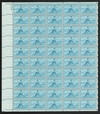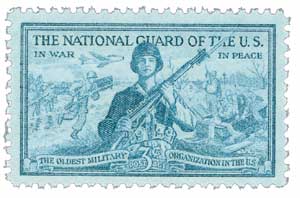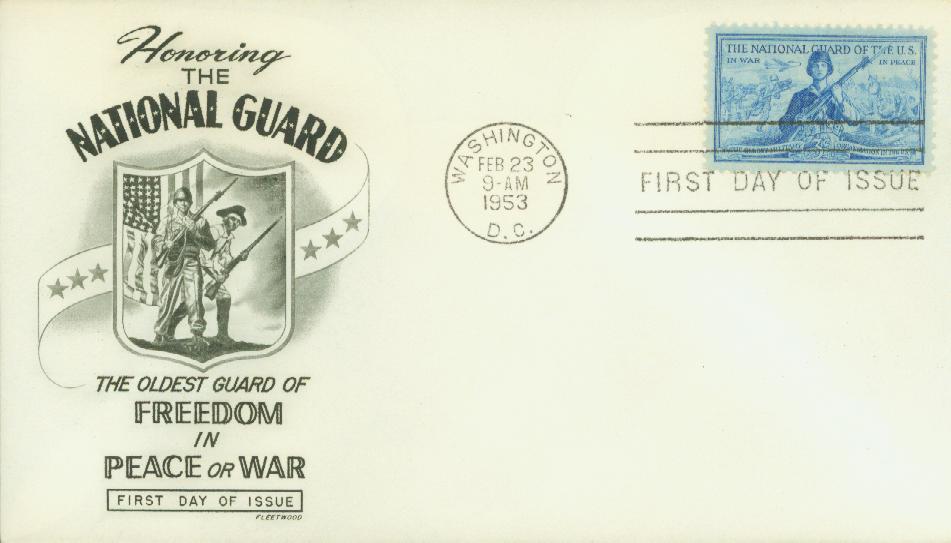
# 1017 - 1953 3¢ National Guard
3¢ National Guard
City: Washington, D.C.
Quantity: 114,894,600
Printed by: Bureau of Engraving and Printing
Printing Method: Rotary Press
Perforations: 11 x 10½
Color: Bright blue
National Guard Founded
Following the success of the Pilgrims in the early 1620s, more English Puritans wished to move to the New World. In 1630, about 1,000 Puritans voyaged to America and settled the Massachusetts Bay Colony. Over time, the colonists began to clash with some of the Native Americans, particularly the Pequot nation. As the colonies grew, they established their own scattered militias, with no real connection to each other.
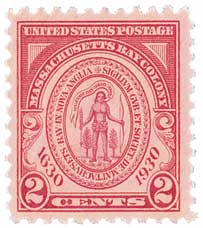
Then, on December 13, 1636, the general court of the Massachusetts Bay Colony in Salem called on all able-bodied men between the ages of 16 and 60 to take up arms and join the militia. Ministers and judges were excluded from the decree, which established the North, South, and East Regiments. The overall goal was to increase the accountability of the militias to the colonial government and train them to be ready to respond immediately in the event of an attack. Each man would defend his community, join in nightly guard duty, and take part in weekly drills.
Not long after, other colonies followed the lead of Massachusetts Bay and established their own militias. By 1638, the colonists brought an end to the fighting with the Pequot, but the militias continued to grow and defend their communities. These militias, Massachusetts in particular, provided the majority of soldiers during the Revolutionary War. They were also the basis for state militias when the United States was established.
The term “National Guard” came a few decades later. When the Marquis de Lafayette visited the US in 1824-25, one New York battalion called themselves the “National Guard,” honoring Lafayette’s famous Garde Nationale de Paris. Then, in 1903, part of the Army was renamed the National Guard and set aside as a reserve force. During World War II, the National Guard accounted for 40% of the US fighting divisions in France.
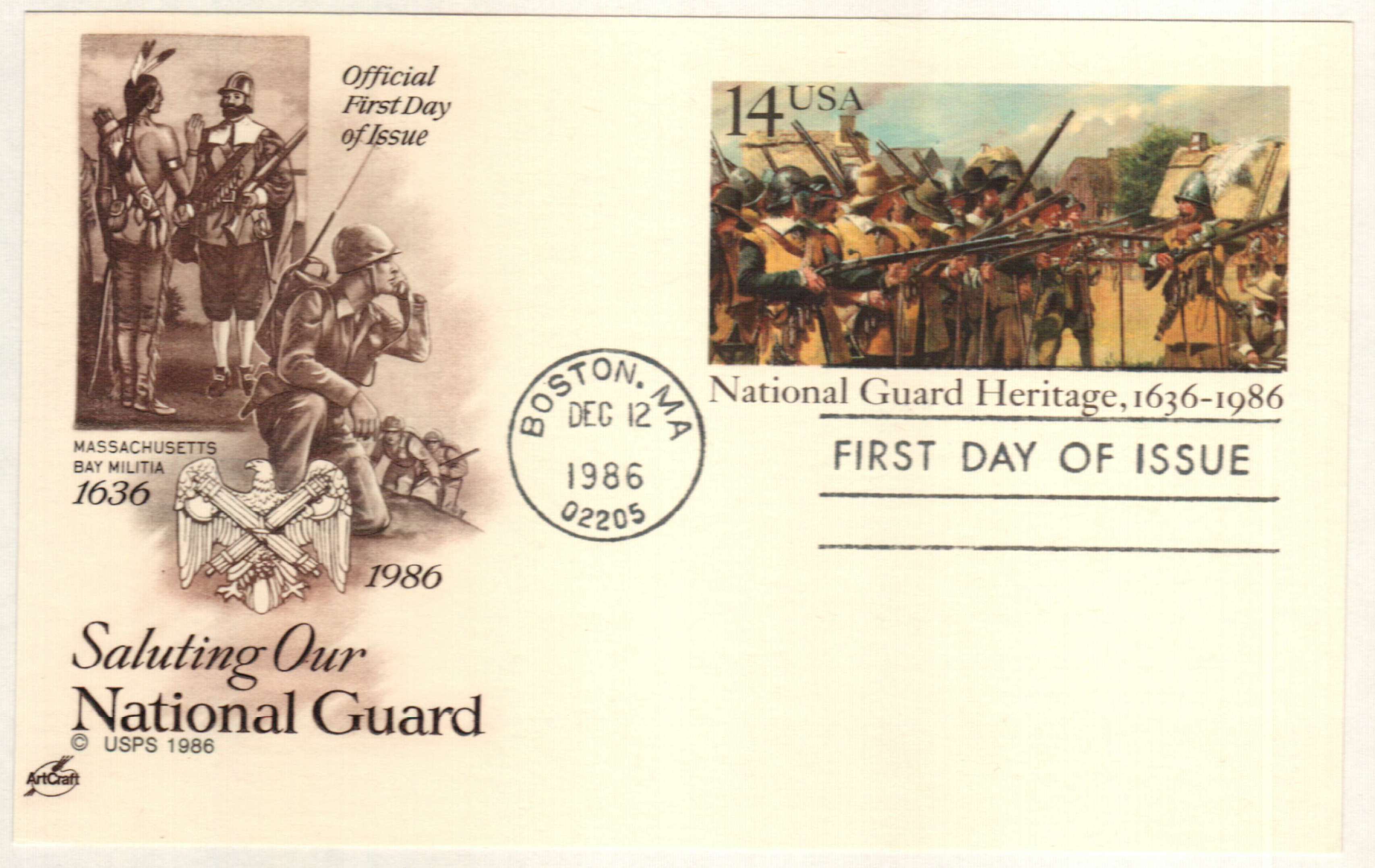
The National Guard was officially established in 1916, and was made up of 19 divisions during World War II. The National Guard consists of state-based military forces that are equipped, trained, and paid by the Federal Government. The president can call them to active duty in the regular armed services.
3¢ National Guard
City: Washington, D.C.
Quantity: 114,894,600
Printed by: Bureau of Engraving and Printing
Printing Method: Rotary Press
Perforations: 11 x 10½
Color: Bright blue
National Guard Founded
Following the success of the Pilgrims in the early 1620s, more English Puritans wished to move to the New World. In 1630, about 1,000 Puritans voyaged to America and settled the Massachusetts Bay Colony. Over time, the colonists began to clash with some of the Native Americans, particularly the Pequot nation. As the colonies grew, they established their own scattered militias, with no real connection to each other.

Then, on December 13, 1636, the general court of the Massachusetts Bay Colony in Salem called on all able-bodied men between the ages of 16 and 60 to take up arms and join the militia. Ministers and judges were excluded from the decree, which established the North, South, and East Regiments. The overall goal was to increase the accountability of the militias to the colonial government and train them to be ready to respond immediately in the event of an attack. Each man would defend his community, join in nightly guard duty, and take part in weekly drills.
Not long after, other colonies followed the lead of Massachusetts Bay and established their own militias. By 1638, the colonists brought an end to the fighting with the Pequot, but the militias continued to grow and defend their communities. These militias, Massachusetts in particular, provided the majority of soldiers during the Revolutionary War. They were also the basis for state militias when the United States was established.
The term “National Guard” came a few decades later. When the Marquis de Lafayette visited the US in 1824-25, one New York battalion called themselves the “National Guard,” honoring Lafayette’s famous Garde Nationale de Paris. Then, in 1903, part of the Army was renamed the National Guard and set aside as a reserve force. During World War II, the National Guard accounted for 40% of the US fighting divisions in France.

The National Guard was officially established in 1916, and was made up of 19 divisions during World War II. The National Guard consists of state-based military forces that are equipped, trained, and paid by the Federal Government. The president can call them to active duty in the regular armed services.







